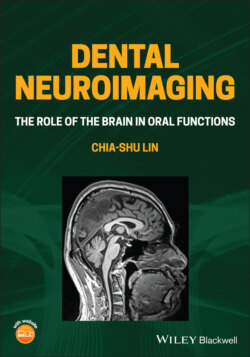Читать книгу Dental Neuroimaging - Chia-shu Lin - Страница 46
1.3.3.1 Prosthodontics
ОглавлениеRestoration of both structural deficits and functional impairment is key to successful prosthodontic treatment. For patients with tooth loss, replacing the missing teeth with a dental prosthesis will restore structural deficits. Moreover, patients should adapt to the prosthesis and improve chewing function. Recent neuroimaging findings have shed light on the mechanisms of adaptation of dental prostheses (Table 1.3). For example, longitudinal research revealed that adaptation of a new denture was associated with not only the improvement of masticatory performance but also changes in brain activation in the somatosensory cortex (Luraschi et al. 2013). Consistently, tactile stimulation on dental implants was associated with brain activation of the somatosensory areas (Habre‐Hallage et al. 2012). The findings suggest that changes in sensory feedback play a key role in improving oral functions by prostheses. Moreover, in partially edentulous patients, reduced occlusion was associated with reduced activation of the prefrontal cortex, and such reduced activation can be modulated by installing a denture (Kamiya et al. 2016). In patients with maxillary dental implants, tactile stimuli induced brain activation not only in the somatosensory cortex but also in the prefrontal cortex (Habre‐Hallage et al. 2012). Changes in somatosensory and prefrontal activation were also identified in another longitudinal fMRI study that dentated patients were chewing a piece of gum when wearing a plate to cover their palate. The change in brain activation was associated with the recovery of masticatory performance, which was initially impaired (by the palatal plate) and later restored (Inamochi et al. 2017). These novel findings suggest that beyond sensory processing, the attentional and cognitive processing related to wearing a denture, as evidenced by the changes in the prefrontal cortex, may play a vital role in the adaptation of prosthodontic treatment. Thus, the neuroimaging findings provide new clues for prosthodontic treatment by highlighting the patient’s adaptation to dental devices.
